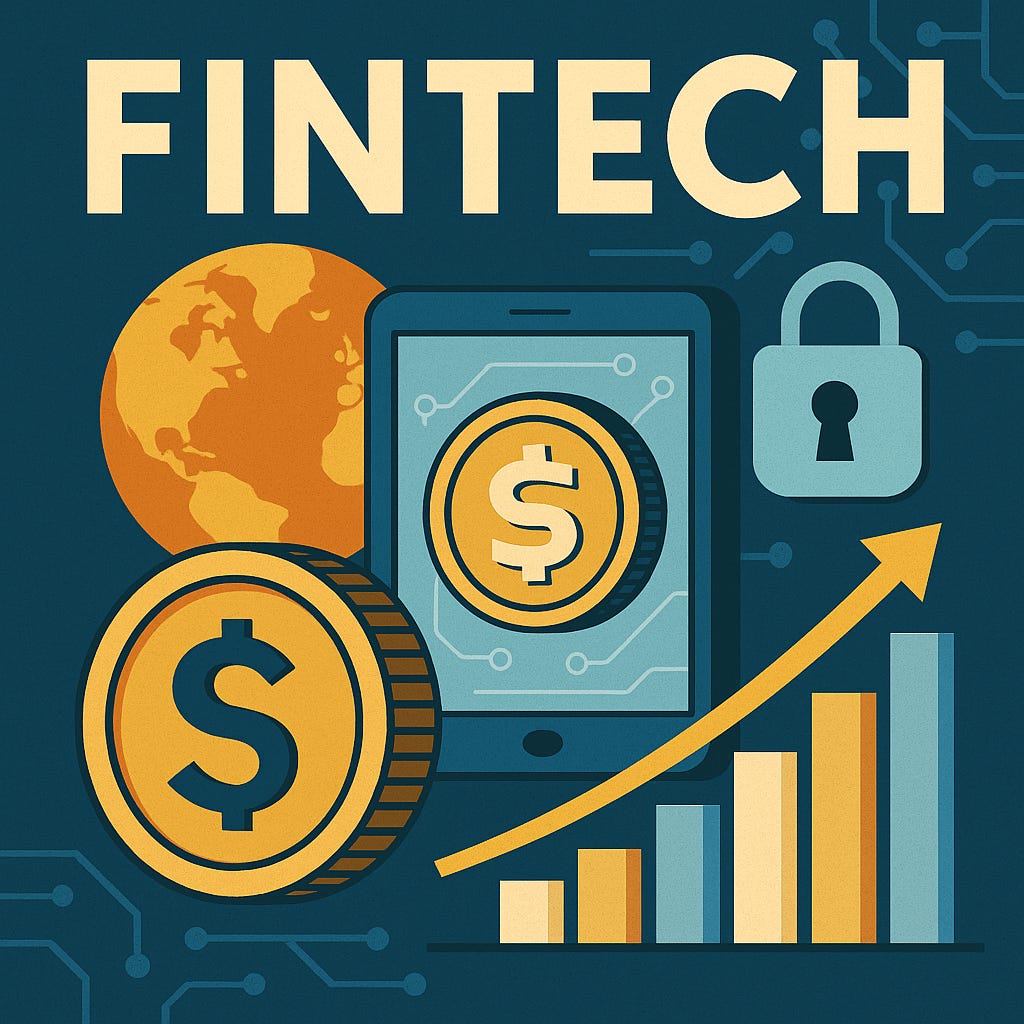💬 If stablecoins become widespread and adopted, they could actually cement U.S. dollar dominance — rather than weaken it.
🎙️ Episode Overview: Money in Motion
Stablecoins, Payments, and the Global FinTech Race
For the 71st episode of The Hale Report, Lyric Hughes Hale is joined by Collin Canright — a pioneer in Chicago’s fintech community, seasoned journalist, and founder of FinTech Rising. He reflects on the long arc of financial technology, from digital experiments in the 1980s to today’s debates over stablecoins, online identity, and shifting global economic power.
For more than three decades, Collin’s mission has been to make technologies accessible for business and financial leaders—from the earliest days of electronic banking in the 1980s to today’s digital payments and fintech revolutions. He’s also the founder of the Chicago Payments Forum and a coach to emerging leaders in the industry. Through his writing, publishing, and community-building, Collin has become one of the most trusted, cogent, and rational voices framing the discussion on the future of money.
Collin explains how storytelling plays a vital role in making fintech understandable, especially for audiences less familiar with the technology. Stablecoins are explored as both a promise and a risk — offering faster, seamless transactions and the potential to reinforce US dollar dominance, but also raising concerns if private organizations take control of money’s design.
Collin emphasizes that finance is ultimately built on trust and identity. Unlike other industries, moving fast and breaking things can be dangerous in financial systems, where verifying who we are is just as critical as moving money. On the global stage, he warns that the United States risks losing ground as China leapfrogs layers of infrastructure to scale quickly in digital payments, while cities like his hometown of Chicago adapt their strengths in physical trade to digital networks.
He suggests the concept of money may evolve faster than the banking system, which remains slow-moving by design. The real signal of transformation will come when the underlying technology — whether crypto, tokenization, or traditional banking — becomes invisible to users. And both Lyric and Collin agree that Tradfi and Defi are likely to combine to create the infrastructure of payment systems. (The current valuation of the crypto market is roughly $4 trillion dollars, about the same as the market cap of Nvidia.)
Their wide-ranging conversation includes broader reflections on the vital need for a trusted digital identity, the risks of AI-generated content feeding on itself, and the lessons history can offer. Collin closes by pointing to Alexander Hamilton as a figure whose vision and ambition still resonate in shaping the financial system of today and tomorrow.
Topics Discussed
Evolution of payments – electronic banking in the 1980s through to today’s digital systems.
Stablecoins – their role as a bridge between traditional finance and crypto, plus risks of “private money.”
U.S. dollar dominance – whether stablecoins could reinforce rather than erode the USD.
Security challenges – banking hacks, crypto wallet risks, and the rise of AI-driven fraud.
Digital identity – the urgent need for secure identity systems in finance and online life.
Global competition – China’s lead in mobile payments.
Future trends – quantum computing, tokenization, and micropayments for media and local journalism.
🎤 Key Moments
❝ Storytelling is really important to understanding fintech. Younger people may get it immediately, but for older listeners, it’s the story that helps them understand why the fintech revolution matters.
❝ A lot of the problems we face in fintech today are the same ones we were trying to solve in the late 80 s — how do we make money move seamlessly across borders, across systems, and across generations of technology?
❝ The transparency in how the one-to‑one peg works is very important. Stablecoins were designed to reduce friction — to make trading between coins, and between organizations, smoother, the same way international payments once tried to be.
❝ In finance, it’s not just about money — it’s about identity. If I’m a banker, how do I know who you are? That’s the real question that needs solving. We need a way to prove who we are in a digital world, or the system will eventually crash.
❝ If private organizations are effectively designing money, we could see a return to the days of private currencies — like before the Civil War, before the greenback.
📚 Influences: Alexander Hamilton
💬 I would like to sit down with Alexander Hamilton. He did so much and had such a vision for the country. I don’t think it’s important to meet with people you agree with.
Alexander Hamilton created America’s financial foundation — a national bank, federal debt assumption, and a stable currency to anchor trust in the new republic. Lincoln, decades later, rebuilt that foundation in crisis with greenbacks and national banks, replacing chaotic private money that was issued by local banks. Hamilton was the architect; Lincoln the reformer who reforged the system under fire.Hamilton trusted strong central institutions to stabilize credit; Alan Greenspan trusted markets to regulate themselves. Hamilton built guardrails for a young system; Greenspan loosened them in a mature one. The first was a builder of trust, the second a manager of complexity — one created resilience, the other revealed its limits.💬 Join the Discussion
Do you think stablecoins will strengthen the U.S. dollar’s global role — or fragment the financial system like private currencies once did?
🎙️About Our Guest
📍Chicago
Instagram: canright.co/garden
LinkedIn: Collin Canright
Company website: Canright Communications
🎙️About Our Host
📍Chicago
📚 Related Reading & Listening
Hamilton’s Vision
The Big Man. A reflective profile of Alexander Hamilton's influence on America’s financial foundations. Joseph Ellis, The New Yorker, 2001.
Decentralized Finance
Greenback (1860s Money). Overview of Civil War–era US paper currency system — background to Collin’s private‑money comparison.
China Is Worried About Dollar-Backed Stablecoins, Zongyuan Zoe Liu, Foreign Policy, 19 Aug, 2025.
Lincoln’s Hamiltonian Financial Revolution
Review of Roger Lowenstein’s Ways & Means, highlighting how Lincoln modeled Hamilton's financial innovations.
AI & Media
Hard Fork (NYT Podcast). The podcast Collin referenced—Kevin Roose & Casey Newton explore the rapidly evolving tech landscape.
The Best Podcasts of 2023 (Vogue). Highlights Hard Fork as a must-listen for tech and fintech topics.
Finance & History
The Money Plot (by Frederick Kaufman). Explores the evolution of money—its power, mythology, and stories—a thematic fit with fintech storytelling.
Quantum Computing
Quantum Payments — YouTube (August 17, 2025)
Recap of a Chicago Payments Forum event held during TechChicago Week, featuring Peter Tapling on banking implications and Rob Weiss on the legal and international issues of quantum computing.
More about Fintech on econVue
Feel free to share this podcast—to receive future podcasts please subscribe.





















